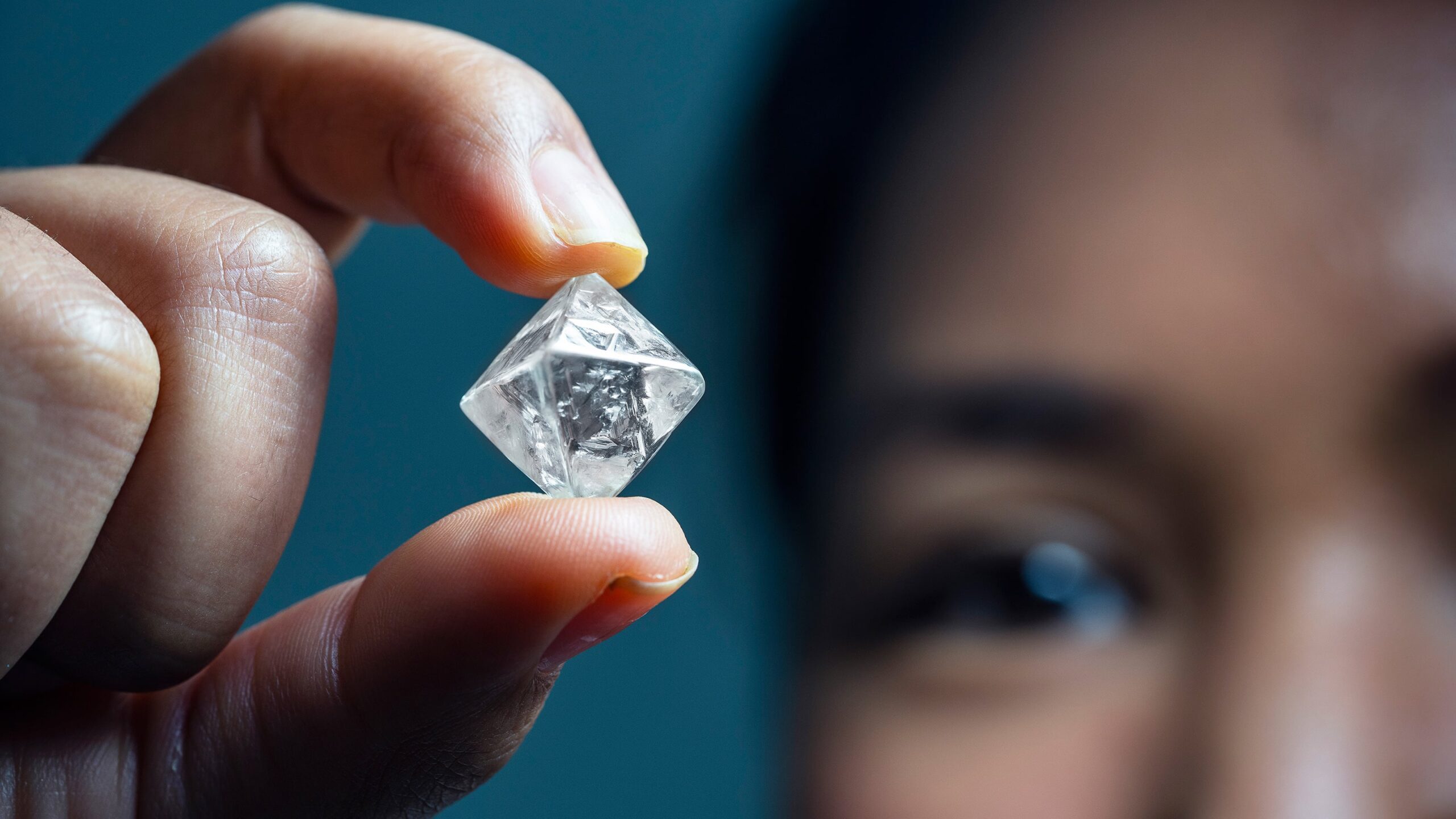Lab created diamonds are the same as natural mined diamonds, but they’re cheaper. However, lab grown diamonds are not certified by GIA, so you need to know how to choose a gem that will last for years.
Lab diamonds are the same as natural mined diamonds
So, what is a lab created diamond? Lab-created diamonds are the same as natural mined diamonds in every way that matters. They have the same chemical composition and physical properties, they are just as hard and fire, brilliance, and luster of a real diamond. The only difference is how they were made. Lab-created diamonds begin as carbon atoms that are bonded together using high heat to create a synthetic diamond crystal structure (similiar to how a real diamond is formed).
There is no difference in the physical quality of a lab created diamond and a natural mined diamond
Lab created diamonds are made from the same material as natural mined diamonds. They are created in a lab under strict quality control, with no difference in size, shape, or quality. A lab-created diamond is not treated with any chemicals or heat, and it is indistinguishable from a mined diamond.
Lab grown diamonds are cheaper than natural mined diamonds
Lab grown diamonds are cheaper than natural mined diamonds for several reasons:
- There is no mining involved, which means there’s no labor cost.
- The process has been streamlined to improve efficiency and reduce waste.
- They’re produced in a controlled environment, so they’re more consistent than naturally occurring diamonds.
- Since they don’t rely on scarcity like mined diamonds do, they’re less expensive.
Lab grown diamonds are not certified by GIA
GIA is the most respected diamond grading authority in the world. It’s their opinion that lab-grown diamonds are not natural, so they do not certify them.
This doesn’t mean that you can’t get an appraisal for your lab created diamond—but a gemologist who works for GIA won’t be able to give it a grade or verify its authenticity in any way. The most they could say is “this looks like a diamond” and then let you know what else they think it might be based on its appearance (like moissanite or cubic zirconia). You should shop around before choosing where to go for an appraisal; there are other labs that will appraise these kinds of stones and offer certification services if you need them.
Lab created diamonds are indistinguishable from naturally mined diamonds, but they can be 30% cheaper
Lab grown diamonds are the same as natural mined diamonds in every physical way. They look the same, they feel the same and they’re both equally hard and durable. There’s no difference between a lab created diamond and a naturally mined one in terms of appearance, but there is one big difference when it comes to price: Lab grown diamonds can be 30% cheaper than their natural counterparts.
This savings doesn’t come from cutting corners—it comes from skipping out on some steps in production that naturally mined diamonds go through. For example, because there are no underground mining processes involved with lab created stones (you don’t have to dig them out of the ground), you won’t have to pay for labor costs associated with mining or pay royalties or tariffs on your purchase price like you would if you were buying an actual diamond mined from nature!
lab-grown diamonds vs real diamonds
If you’re looking to buy a diamond, you might be wondering if a lab-grown diamond is right for you. Here’s what you need to know.
lab-grown can be just as beautiful as earth mined.
While it’s true that lab-grown diamonds are less rare than earth-mined diamonds, and therefore not as eye-catching in a jewelry setting, they can still be just as attractive. In fact, their appearance is often more reliable than their earth-mined counterparts. Lab-grown diamonds are grown in a controlled environment using chemical processes instead of the natural forces found underground; this means they’re grown with perfect clarity and color every time—no need to worry about getting a cloudy diamond or one that’s too yellow!
Lab-grown diamonds also tend to be more affordable than mined ones because they’re not subject to supply constraints driven by mining costs. For example, De Beers has capped its production at 40 million carats per year since 2013 but has been able to produce 2 million carats per year since 2008 through its synthetic diamond products division called Element Six (which is owned by De Beers). Of course, those numbers pale in comparison with the approximately 150 million carats produced annually from all sources combined—but the point remains: there’s plenty of supply out there if you know where to look for it!
Conclusion
Have you ever wanted to own a Rare Carat Diamonds? If your answer to this question is yes, then this is the right place for you. At Rarecarat.com, our company specializes in engagement rings and has the finest selection of diamonds available. With our company’s knowledgeable expert staff and exceptional customer service, we will strive to make your experience with us as pleasant as possible.
After reading this article, you should have a better understanding of what lab created diamonds are, how they are made and why they are so popular. The biggest difference between natural mined diamonds and lab created diamonds is that the former is expensive while the latter costs less money. However, this doesn’t mean that there are any differences in quality or appearance between these two types of diamonds. They both have the same physical properties (including hardness) as well as optical properties (like refraction index). If you’re looking for something unique then give lab diamonds a try!

